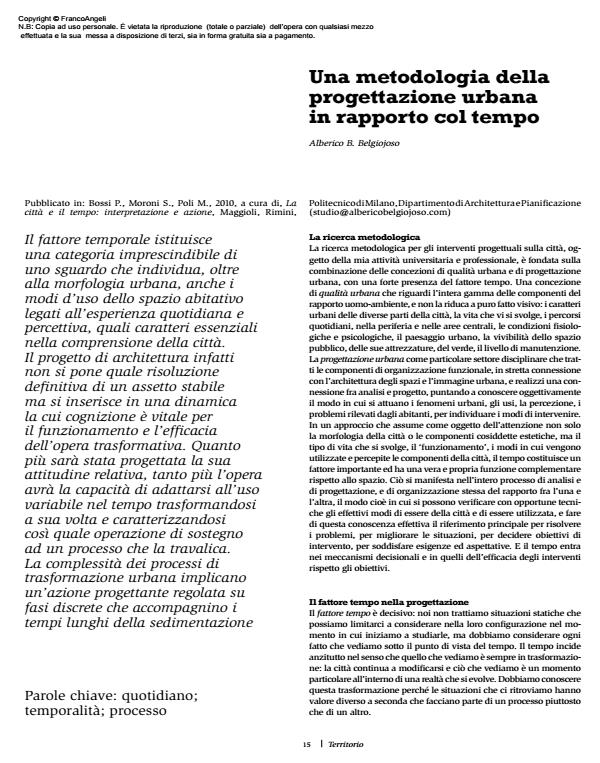A time-related method of urban design
Journal title TERRITORIO
Author/s Alberico B. Belgiojoso
Publishing Year 2011 Issue 2010/55
Language Italian Pages 4 P. 15-18 File size 530 KB
DOI 10.3280/TR2010-055003
DOI is like a bar code for intellectual property: to have more infomation
click here
Below, you can see the article first page
If you want to buy this article in PDF format, you can do it, following the instructions to buy download credits

FrancoAngeli is member of Publishers International Linking Association, Inc (PILA), a not-for-profit association which run the CrossRef service enabling links to and from online scholarly content.
The time factor establishes an essential category of a viewpoint which identifies not only the urban morphology, but also ways of using dwelling space connected with everyday experience and perception as traits that are indispensible to the comprehension of cities. Architectural design is not intended to be the final solution of a stable condition, but is part of a dynamic, knowledge of which is vital for the functioning and effectiveness of a redevelopment project. The more its relative aspect is designed the more a project will be able to adapt to variable use over time transforming itself in turn and thereby assuming the character of an operation which supports a process which passes beyond it. The complexity of the processes of urban transformation imply a design action regulated by discrete phases that accompany the long periods of sedimentation.
Keywords: Everyday; time; process
Alberico B. Belgiojoso, Una metodologia della progettazione urbana in rapporto col tempo in "TERRITORIO" 55/2010, pp 15-18, DOI: 10.3280/TR2010-055003